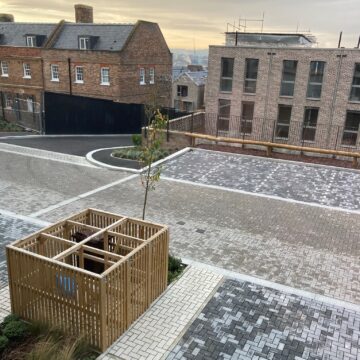Blog
Passivhaus and why it is important
November 12, 2020
EDP are pleased to announce that our Low Carbon Consultant, Rob Stepto, is now fully qualified and accredited to design to the Passivhaus standard.
But what is Passivhaus and why is it important?
Passivhaus is a building performance standard that results in ultra-low energy buildings that use a minimal amount of energy for heating and cooling resulting in an extremely energy efficient building that provides high levels of comfort to the end user.
It is a completely voluntary standard that might be considered by those with a desire to build very low energy buildings.
The key performance criteria for Passivhaus are as follows:
– Primary Energy Demand of less than 120kWh/m²/yr
– Space heating demand less than 15kWh/m²/yr
– Air Tightness lower than 0.6 air changes per hour at 50Pa
– At least 80% heat recovery from ventilation exhaust air
Passivhaus is a simple, physics first approach to construction. It relies on build quality and Mechanical Heat Recovery Ventilation (MVHR) to deliver on the required performance criteria. Not only does Passivhaus reduce energy demand and therefore bills, but it also results in a healthier, more comfortable environment for the building occupants.
To build a Passivhaus, the key ingredients are:
– A high standard of air permeability
– A highly efficient Mechanical Ventilation Heat Recovery (MVHR) Unit
– Extra insulation thickness
– Thermal Bridging removed through considered design of building element junctions
– Low U-value windows and doors (typically 0.7 W/m²K)
The extra insulation, minimised thermal bridging and improved building fabric reduce the heat losses from conduction as much as is possible whilst still remaining practical, i.e. reasonable wall thickness.
By reducing the air permeability to effectively zero, it allows the heat losses through air movement out of the structure to be controlled. However this leaves you with what is essentially an air tight box, and there is not enough fresh air for the building occupants without some sort of ventilation strategy. An MVHR unit is the preferred strategy for a Passivhaus as it gives complete control of the air flow rate and quality if designed properly. The benefits of the MVHR are threefold;
– It reduces heat losses by exchanging heat between the incoming and outgoing air
– It provides the right amount of fresh air for the occupants all year round, a huge advantage over “natural ventilation” which can be intermittent, and largely impractical e.g In the winter when it is too cold to open the windows.
– It filters the air. The incoming air is put through filters which help reduce air pollution, so can help sufferers of hay fever and asthma. Not to mention filtering out Particulate Matter, which is a huge advantage in built up areas.
Whilst a Passivhaus typically requires a little more upfront cost to construct (7-15%), the ongoing running costs are far lower than a traditional construction building. Passivhaus should be of interest to all corners of the industry as they typically sell and rent quicker on the market.
We think Passivhaus is a brilliant design solution when it comes to producing comfortable, healthy buildings with low running costs. Furthermore it has the potential to help massively in working towards the government’s aim of reducing the nation’s CO2 emissions to 80% of the 1990 levels by 2050. We are very pleased to have a certified engineer in our office to answer all your Passivhaus needs as well as any of the normal M & E queries.
If you would like to know more about Passivhaus or would like to discuss your project with us please call the office on 01392 367237 or email rob.stepto@edp-environmental.co.uk

